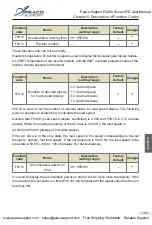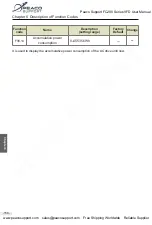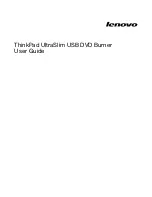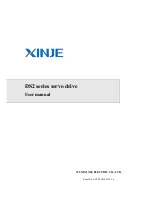
Chapter 6 Description of Function Codes
-169-
Only valid for V/F control. Synchronous modulation means that the carrier frequency chang-
es linearly with the output frequency, ensuring that the ratio of the two (carrier ratio) remains
unchanged. Generally, it is used when the output frequency is high, which is beneficial to the
output voltage quality.
When the output frequency is lower (below 100Hz), synchronous modulation is generally not
required, because the ratio of the carrier frequency to the output frequency is relatively high
at this time, and the advantages of asynchronous modulation are more obvious.
Synchronous modulation takes effect only when the operating frequency is higher than 85Hz,
and asynchronous modulation is fixed below this frequency.
Function
code
Name
Description
(setting range)
Factory
Default
Change
F09.57
Dead zone
compensation mode
selection
0: no compensation
1: compensation mode 1
2: compensation mode 2
1
※
This parameter is no need to modify normally, only if special request of output voltage wave,
or
motor oscillation.
High power suggest compensation modes
2.
Function
code
Name
Description
(setting range)
Factory
Default
Change
F09.58
Depth of PWM random
0: PWM random disabled
1
~
10: PWM carrier frequen-
cy random depth
0
※
Setting random PWM can soften the monotonous and harsh motor sound and help reduce
external electromagnetic interference. When the random PWM depth is set to 0, the random
PWM is invalid. Adjusting random PWM with different depths will get different effects.
Function
code
Name
Description
(setting range)
Factory
Default
Change
F09.59
Rapid current limit
0: Disabled
1: Enabled
1
※
This parameter can be used in overcurrent protection.
If repid current limit long time, AC drive will overheat and cause drive
damaged.
C
h
a
p
te
r
6
Peaco Support FC280 Series VFD User Manual
www.peacosupport.com sales@peacosupport.com Free Shipping Worldwide Reliable Supplier
PEACO SUPPORT
















































